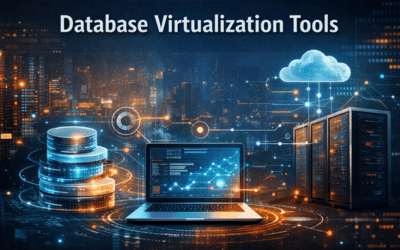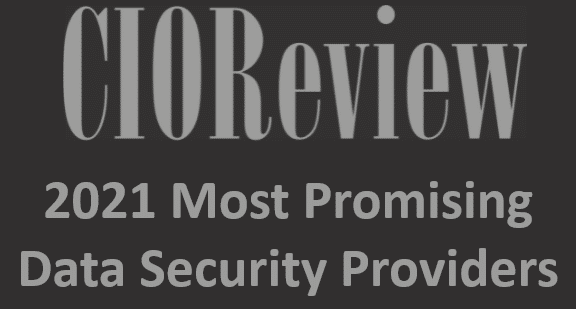
The difference between Metrics and KPIs – optimizing their use
APR, 2023
by Andrew Walker
Author Andrew Walker
Andrew Walker is a software architect with 10+ years of experience. Andrew is passionate about his craft, and he loves using his skills to design enterprise solutions for Enov8, in the areas of IT Environments, Release & Data Management.
Metrics and Key Performance Indicators (KPIs) are two concepts that are critical to the success of any organization. Metrics are measurements used to track the performance of a process or system, while KPIs are specific, measurable goals used to evaluate progress towards achieving business objectives. In order to effectively manage and improve performance, it is important to understand the difference between Metrics and KPIs, and how to use them together.
Enov8 Enterprise Release Manager
*Innovate with Enov8
Streamline delivery of IT change through embracing “Scaled Agile” best practice.
This post will provide an in-depth explanation of Metrics and KPIs, highlight the differences between them, and provide tips for optimizing their use. By the end of this post, you will have a better understanding of how to leverage Metrics and KPIs to drive success in your organization.
Understanding Metrics
Metrics are numerical measurements used to track the performance of a process or system.
In the context of IT Release Management, Metrics could include:
- Number of releases per month
- Average time to deploy a release
- Number of incidents caused by releases
- Percentage of successful releases
- Time to resolve release-related incidents
- Percentage of automated test coverage
In the context of IT & Test Environment Management, Metrics could include:
- Percentage of uptime for test environments
- Number of environment outages
- Mean time to resolve environment issues
- Number of conflicts or contention issues
- Time to provision an environment
- Number of environment-related incidents caused by releases
Metrics are important for identifying areas of improvement and tracking progress over time. By tracking these Metrics, organizations can make data-driven decisions to improve IT Release Management and Test Environment Management processes. It is important to choose Metrics that are relevant to the specific IT processes being measured and track them consistently over time to identify patterns and trends.
Enov8 Environment Manager, Metrics Data Brick: Screenshot
Understanding KPIs
In the context of IT Release Management and Test Environment Management, Key Performance Indicators (KPIs) could include:
IT Release Management KPIs:
- Release success rate: Percentage of releases that are deployed successfully
- Deployment frequency: Number of releases deployed per month or quarter
- Mean time to deploy (MTTD): Average time taken to deploy a release
- Mean time to recover (MTTR): Average time taken to recover from release-related incidents
- Release lead time: Time taken from the initial request to deploy a release to its deployment
- Change failure rate: Percentage of changes that result in release-related incidents
IT & Test Environment Management KPIs:
- Environment availability: Percentage of time the test environment is available
- Environment provisioning time: Time taken to provision a test environment
- Mean time to repair (MTTR): Average time taken to resolve environment issues
- Environment stability: Number of environment-related incidents caused by releases or changes
- Environment utilization: Percentage of time the test environment is being utilized
- Environment refresh time: Time taken to refresh an environment with the latest data or configurations
KPIs are essential for measuring the effectiveness of IT Release Management and Test Environment Management processes. KPIs should be specific, measurable, achievable, relevant, and time-bound (SMART) and should be aligned with the organization’s overall business objectives. By tracking these KPIs, organizations can make informed decisions to improve their IT Release Management and Test Environment Management processes and achieve their business goals. It is important to review and adjust KPIs regularly to ensure that they remain relevant and aligned with the changing needs of the organization.
Differences between Metrics and KPIs
While Metrics and KPIs are both used to measure performance, there are key differences between them:
Metrics:
- Provide general measurements of performance
- Can be quantitative or qualitative
- Used to track various aspects of a business
- Provide insights into areas that may require improvement
- Do not necessarily provide a clear target or goal
- Can provide context for KPIs
KPIs:
- Are specific, measurable goals used to evaluate progress towards achieving business objectives
- Are aligned with the overall business strategy
- Are tailored to specific departments or areas of the organization
- Provide a clear target or goal
- Are used to track progress towards important outcomes such as increased revenue, improved customer satisfaction, or reduced costs
- Are communicated clearly to all stakeholders
- Are regularly reviewed and adjusted to ensure relevance and alignment with business objectives
While Metrics provide general measurements of performance, KPIs are specific goals that are aligned with the overall business strategy and are used to track progress towards important outcomes. KPIs provide a clear target or goal and are communicated clearly to all stakeholders. Metrics can provide context for KPIs and help identify areas for improvement. It is important to use Metrics and KPIs together to track performance effectively and make data-driven decisions to achieve business success.
Optimizing Use of Metrics and KPIs
To optimize the use of Metrics and KPIs, organizations should consider the following:
- Select the right Metrics and KPIs:
- Choose Metrics and KPIs that are relevant to the business objectives and areas being measured
- Ensure Metrics and KPIs are aligned with the overall business strategy
- Choose Metrics and KPIs that are measurable and can be tracked consistently over time
- Use SMART criteria for setting KPIs:
- Ensure KPIs are Specific, Measurable, Achievable, Relevant, and Time-bound
- Clearly communicate KPIs to all stakeholders
- Ensure KPIs are tailored to specific departments or areas of the organization
- Use Metrics to provide context for KPIs:
- Use Metrics to track general performance and provide insights into areas that require improvement
- Use Metrics to identify trends and patterns that can inform the setting of KPIs
- Track and analyze Metrics and KPIs:
- Regularly track and analyze Metrics and KPIs to identify areas that require improvement
- Use data to make informed decisions to improve performance
- Use visual representations of data, such as graphs and charts, to better understand trends and patterns
- Regularly review and adjust Metrics and KPIs:
- Regularly review Metrics and KPIs to ensure they remain relevant and aligned with the changing needs of the organization
- Adjust Metrics and KPIs as necessary to ensure they continue to provide value and support business objectives
By optimizing the use of Metrics and KPIs, organizations can effectively track performance, identify areas that require improvement, and make data-driven decisions to achieve business success.
Conclusion
In summary, Metrics and Key Performance Indicators (KPIs) are essential for tracking performance and driving success in any organization. Metrics provide general measurements of performance, while KPIs are specific, measurable goals used to evaluate progress towards achieving business objectives. By selecting the right Metrics and KPIs, using SMART criteria for setting KPIs, using Metrics to provide context for KPIs, tracking and analyzing Metrics and KPIs, and regularly reviewing and adjusting Metrics and KPIs, organizations can effectively manage and improve performance.
Products like Enov8, a Platform of Insight for Release & Environments, can help organizations optimize the use of Metrics and KPIs for IT Release Management and Test Environment Management processes. Enov8 provides a centralized platform for managing Metrics and KPIs, tracking performance, identifying areas that require improvement, and making data-driven decisions to improve IT processes. By leveraging Enov8, organizations can achieve better visibility and control over their IT Release Management and Test Environment Management processes, ultimately driving business success.
Other Reading
Enov8 Blog: Top 5 TDM Metrics
Enov8 Blog: Leveraging DevOps Metrics to Bridge Gap with Business & IT
Enov8 Blog: The PPP Framework (Measure People, Process, Product)
Relevant Articles
Database Virtualization Tools: 9 to Know About in 2026
Organizations evaluating database virtualization tools are usually trying to solve a very practical problem: how to give teams fast, safe access to realistic data without copying production databases over and over again. Whether the driver is test automation,...
Enterprise Release Management: A Comprehensive Guide
Enterprise Release Management (ERM) is a set of end-to-end practices that enable large organizations to effectively manage software releases. ERM is uniquely designed for the challenges of multiple teams building and releasing software simultaneously. ERM establishes...
Your Essential Test Environment Management Checklist
“Test Environment Management Checklist.” Yep, that sounds like a mouthful, but don’t let that discourage you. The idea here is quite simple—adopting a checklist to evaluate the soundness of your test environment management approach. Even though the idea sounds simple...
A Detailed Guide to SAP Data Masking
SAP systems handle some of the most sensitive data in the enterprise: financial transactions, HR information, supplier records, customer profiles, operational details, and more. For that reason, copying production data into non-production systems without modification...
Release vs Deployment Management: What’s the Difference?
In the always-an-adventure world of IT service management, there are several key processes that are essential for delivering high-quality services to customers and end-users. Two of the most critical processes are release management and deployment management....
7 Tools to Help with Application Rationalization
Application rationalization is the process of identifying which applications an organization should keep, update, consolidate, or retire. Think of it as a financial adviser, but instead of your investment portfolio, it's your application portfolio. Most companies take...












